Elizabeth Griffiths’ portfolio is a wonderful reminder that textile artists don’t have to stay in their lane. It’s okay to set down the needle and thread at times and pick up a paintbrush or ink roller instead. After all, mixed media is a mashup of various approaches. And the lessons we learn when focusing on different art forms can inform everything we create, including our textile art.
Elizabeth’s work also demonstrates how one’s emotions and state of mind can influence mixed media choices. When serious illness came knocking at Elizabeth’s door, she became acutely aware of how her rollercoaster health journey dictated whether to pick up a needle or a paintbrush. And she gave herself permission to follow those artistic instincts.
Variety is truly the spice of Elizabeth’s creative life. And by not playing favourites among stitch, watercolour and ink, she shows us how mixed media possibilities are truly endless. Including earning a spot on a major TV competition show!
Mixed media freedom
When I stitch, it’s deliberate. I know where my needle is going and what I want to achieve. But when I work in mixed media, I’m able to break away from some of the predictability of stitch and can instead be led by the medium I am using.
I often use a lino-print or watercolour on fabric as my starting point. These base paintings and prints are abstract. I then use embroidery to highlight the abstract piece, using colour and shape to enhance the composition. I find this approach helps me embrace the accidents and incidentals, which are always my favourite bits in my watercolour and print works.
I experiment through trial and error when choosing inks and paints to find the right combination of fabric and ink or paint. I usually work with a highly pigmented watercolour paint on a medium-weight calico. I recently ran out of my painting fabric, and even though I’m sourcing new fabric from the same place, it looks like it’s been treated differently, as the paint seems to bleed more into the fabric. So, I’m still looking for the perfect fabric.


For printing, I use a calico-safe wash ink, and I prefer to print upon a heavy linen. Because I’m after an abstract application of the ink, I find the slubs in the linen add interest and texture to the prints.
When I’m asked for advice about using mixed media, I suggest just giving it a go and then keep going. It’s all about experimentation. Try a few different combinations of fabrics and paints. Then when you find a combination that works for you, keep practising, exploring and learning.
I also think it can be helpful to not only focus upon stitching. I’m currently enjoying learning more about watercolour through my abstract floral pieces. I tend to go in cycles alternating among stitch, print and paint as my favoured media. It gives me an opportunity to grow and learn and then bring that knowledge to my mixed media work.

Finding Balance
I was given a sewing machine for my 21st birthday whilst studying architecture at Oxford Brookes University. I started to explore machine embroidery, and I often used my abstract stitching as inspiration for building plans and elevations. My first stitched artwork was an interpretation of Le Corbusier’s Modular Man that I machine embroidered on my flatmate’s old leather apron as part of my coursework. I also surprised my tutors by sewing my final projects!
After leaving university, I dabbled in art here and there. I made some embroideries, lino-printed Christmas cards each year and occasionally sketched, but I hadn’t formed an artistic practice. I don’t think I realised how much I needed art until I was retraining in public health. I needed a creative outlet to help me maintain balance.
I’m a public health professional in my day job, and the pandemic response was incredibly challenging. I had both a strategic and operational leadership role during the pandemic, including setting up testing arrangements, managing outbreaks, writing local emergency policies and advising medical groups and the general public. The hours were long, intense and pressured.
Art, especially embroidery, became an essential way for me to maintain balance whilst working. Stitching is very much like meditation and mindfulness, and it became an ideal way to switch off the buzzing in my brain, slow down and regulate work during tense times.
Now when I find myself itching to be creative, I try to give myself art time at least once a week. A big part of that is giving myself permission. I recognise art is an essential part of who I am and what I need to maintain balance.
I also strongly advocate for the use of art in public health. Art has been proven to provide health benefits when used as an intervention. It also prompts conversations that otherwise might not happen, which ultimately improves access to health across communities.


The eyes have it
I’ve always been drawn to eyes, as I think they display an honesty about a person. So much of an individual’s personality and thought processes seep through their eyes, and I try to reflect that essence through my embroideries. Creating eye embroideries during the pandemic was also a great way for me to feel closer to friends and family whilst we were all in our household bubbles.
My first eye portraits were of my son and daughter. I loved how viewers could tell immediately whose eyes were whose and that their personalities could be seen. My early eye portraits were far less detailed than those I create now. And in some ways, I’d like to go back to that earlier simplicity, as now there are so many stitches!
I use a source photograph to create my portraits. I’ll usually start by stitching guidelines as a rough starting point and then dive in with all the additional stitching. I don’t really start with an end point in mind. I just let the shapes and colours evolve as I go along.
I prefer unbleached calico as the base fabric. I like its natural fibres and how the fabric’s slubs show. My threads come from a rather messy box filled with small, rescued thread scraps nestled alongside new threads. It always delights me to find a small length of thread in the perfect shade. Some threads in my box have been handed down and are over 50 years old.


In loving memory
My mom was an avid textile artist and, whilst in treatment for breast cancer, she designed and created a beautiful cross stitch of a nesting bird. It has long been a treasured and inspiring piece.
I thought long and hard about how I might honour that piece using stitch and then, as we entered a period of lockdown, the concepts of home, nurture and family came to the fore. My ‘nest’ motif was born.
I created several nest works as part of my Stay at Home series that included three embroidered nests in colour palettes reminiscent of my mom. I also created a mixed media print and embroidered nest, and a series of lino-print nests, each with a different application of ink. I wanted to show the very different experiences during lockdown, so each piece is its own unique variation.
As with my eye portraits, the nests were created from my messy box of threads and, fittingly, many of the thread scraps had originally been used by my mom. I stuck to my usual style of stitching using double stranded threads and satin stitch all in a vertical plane.




Selfie time
Flashes of Self is a self portrait created in reaction to working in emergency response during the pandemic. The job was exhausting and draining, and whilst working very long days, we were all separate and working remotely from home. The portrait explores the different emotional dimensions I exhibited during the pandemic. I became functional and reactive, however, through my time with family and art, glimpses and flashes of my true self came through. I was in danger of losing a bit of myself, and so self-portraits were a way of reclaiming what was important to me.
Covid Selfie was my first full self-portrait. I had previously stitched my eye, but this was far more ambitious. I actually started working on the selfie before the pandemic. I stitched the cheek, and then for whatever reason, I became a bit daunted by the size of the undertaking and left it for a while. I think when I picked it back up, it was without really thinking about the finished product. I was more interested in the process and the opportunity to unwind.
I initially worked from a photograph, but then I took artistic licence! I try not to think about the whole, but instead look at the shapes and colours as I go along. It is only really at the end that I step back and see the whole portrait has emerged.


First solo show
I entered an open exhibition at the General Office art gallery in Stourbridge in 2019. I was lucky enough to win the People’s Choice Award for the open, and my prize was my own solo exhibition at the gallery!
I spent some time compiling works and a narrative for the show. Three sets of series work were displayed to reflect different parts of my pandemic experience, and each series used a different artefact as its starting point.
Apart explored isolation, identity, separation and sparks of life using an embroidered ‘covid selfie’ as a starting point. Stay at Home explored safety, comfort, protection and nurture of home with the nesting series inspired by my mom’s cross stitch. And Beauty in the Incidental looked at the everyday and familiar through a new lens, exploring the passing of seasons on local landscapes. The starting point for that series was an embroidered inkblot of the moon.
The exhibition’s title, A Long Line, refers to both a stitch and a reference to my textile artist heritage. I wanted to acknowledge the fact my solo show was a moment in time in the stitching journey of many generations of creatives.
Needlework had a very strong presence in my mother’s side of the family. I learnt to sew with my mum. She taught me using an old Singer sewing machine on which I promptly sewed through my finger! The needle literally broke off in my finger, and I had to get a tetanus injection.
I’ve also taken a lot of inspiration from my aunt’s use of colour in her quilts. She is great at adding accents that really lift her work.
I feel much gratitude for having the skills and patience needed for needlework and other art forms, as well as my parents’ exposing me to art and creating. I take much joy in seeing these skills passed on to the next generation, and I wanted to celebrate their work in the exhibition too.



And action!
In 2022, I was fortunate to be selected to compete in Sky Arts’ well-respected TV show Portrait Artist of the Year. My mixed media Flashes of Self work earned me the spot.
The competition gives artists four hours to paint (or, in my case, stitch) a celebrity sitter. As one might imagine, four hours is no time at all for a textile artist. Especially when one is being interviewed, photographed and recorded live all at once.
Unfortunately, my grand plans to practise beforehand were fairly scuppered, as I was also planning my solo show and moving house at the same time. So, my actual preparation was simply thinking how best to achieve my outcome in four hours whilst staying true to my style.
My celebrity sitter was Bruno Tonioli, a former judge on Strictly Come Dancing. He was great fun, but he would not sit still! I started off with a quick sketch to make sure I had the composition I wanted. I then blocked in some guidelines, so I could make sure the sitter’s features were positioned and proportioned correctly. I then used a black thread to sketch in features, and halfway through, I added a splash of watercolour to give a bit more shadow to the piece. Finally, I started adding stitch details to one of the eyes. I managed to complete the work, but Bruno’s comment was that he wanted more: the Bayeux Tapestry no less! I’ll continue to think about how I can adapt textile art to a four-hour timeframe.

Art and illness
I learned I had breast cancer shortly after I appeared on Sky Art’s Portrait Artist of the Year TV show and after hosting my solo show. Because I lost my mother to breast cancer at an early age, there were quite a few emotions to process. Once again, I turned to my art, and I found it interesting to discover how my emotions and overall state-of-mind at any given point influenced what type of creative medium I chose.
For example, during the four weeks after diagnosis, but pre-operation, I simply could not embroider. The process was too long and deliberate, and I was in my head too much. So, I sought a new medium: watercolour. Watercolour is relatively rapid which was fascinating, especially in how it forced me to watch and learn and essentially hand control over to the paint.
Now when I look back at those paintings, I can see the emotion or thoughts I was subconsciously processing. For instance, the painting I made the day before my operation is defiant and haunting, and I keep it in my studio as a reminder.
After my operation, I was much more comfortable reaching for my needle and thread again. I had prepared some fabrics with paint in readiness, and I embroidered into those to create mixed media pieces whilst I was recuperating.


Having a dedicated creative space has also helped. I have always thought a key benefit of working with textiles is they are portable. I used to stitch anywhere, including the train, curled up on a chair, and poolside whilst waiting for the children to finish their classes. But we recently moved house, and I was adamant about bagging one of the rooms as a studio. I love it. The light is great, and it’s just lovely to have a space that is all about creating and finding balance.
I am still on my healing journey, and thankfully, the cancer appears to have all been removed. I am still due to have more operations over the coming year. But this illness journey has been one of growth and learning, and I can’t wait to see where it takes my art.

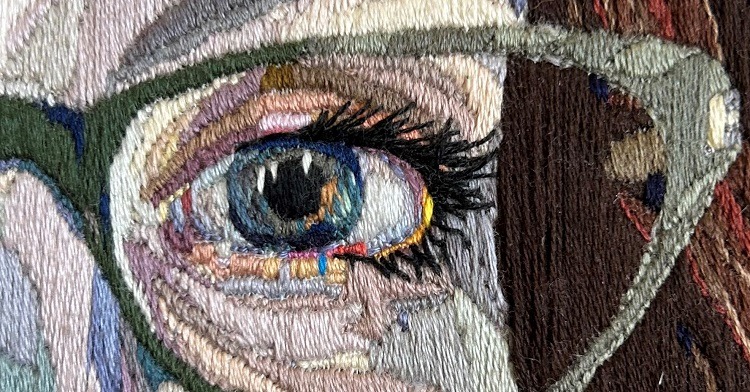
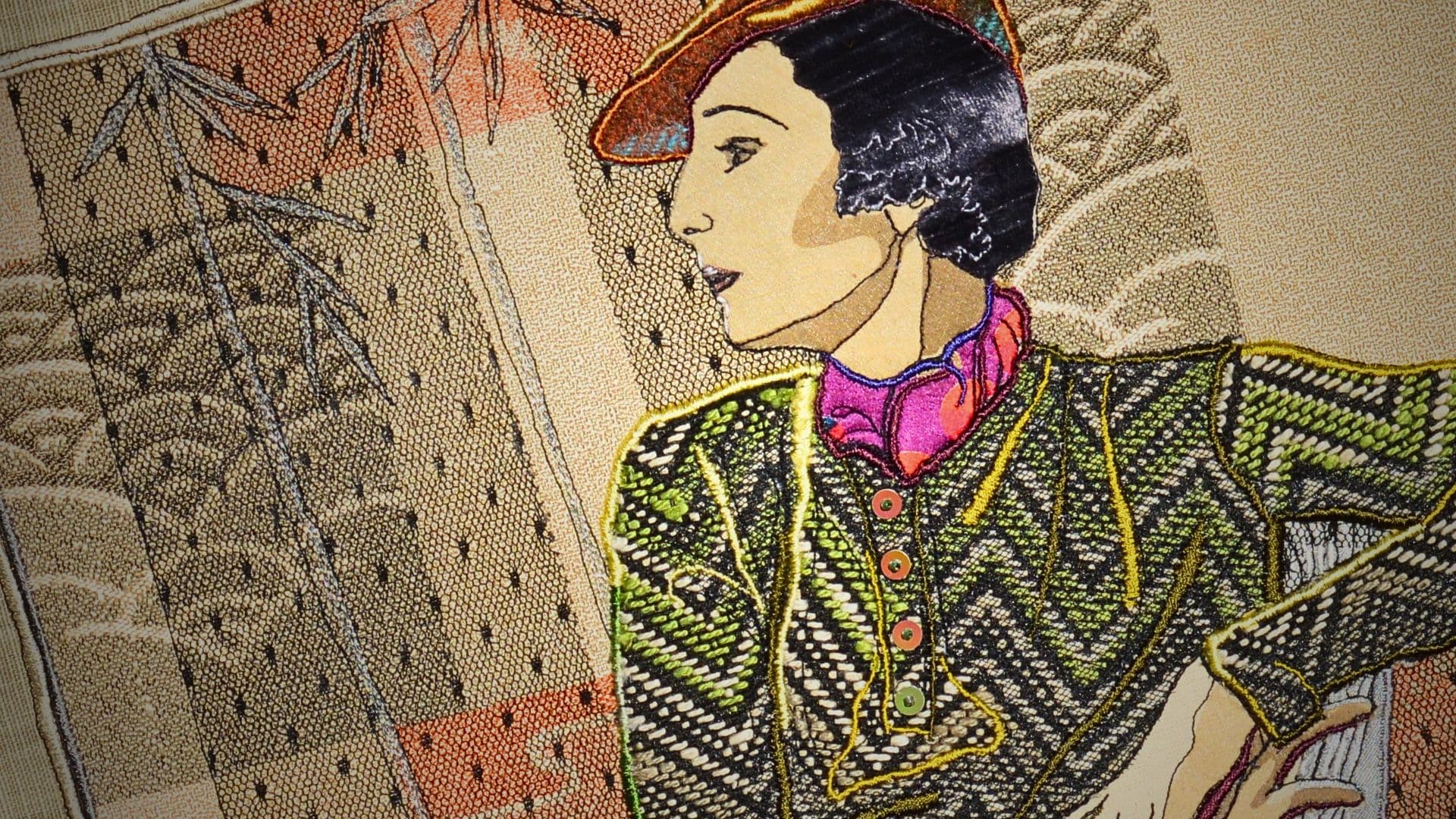
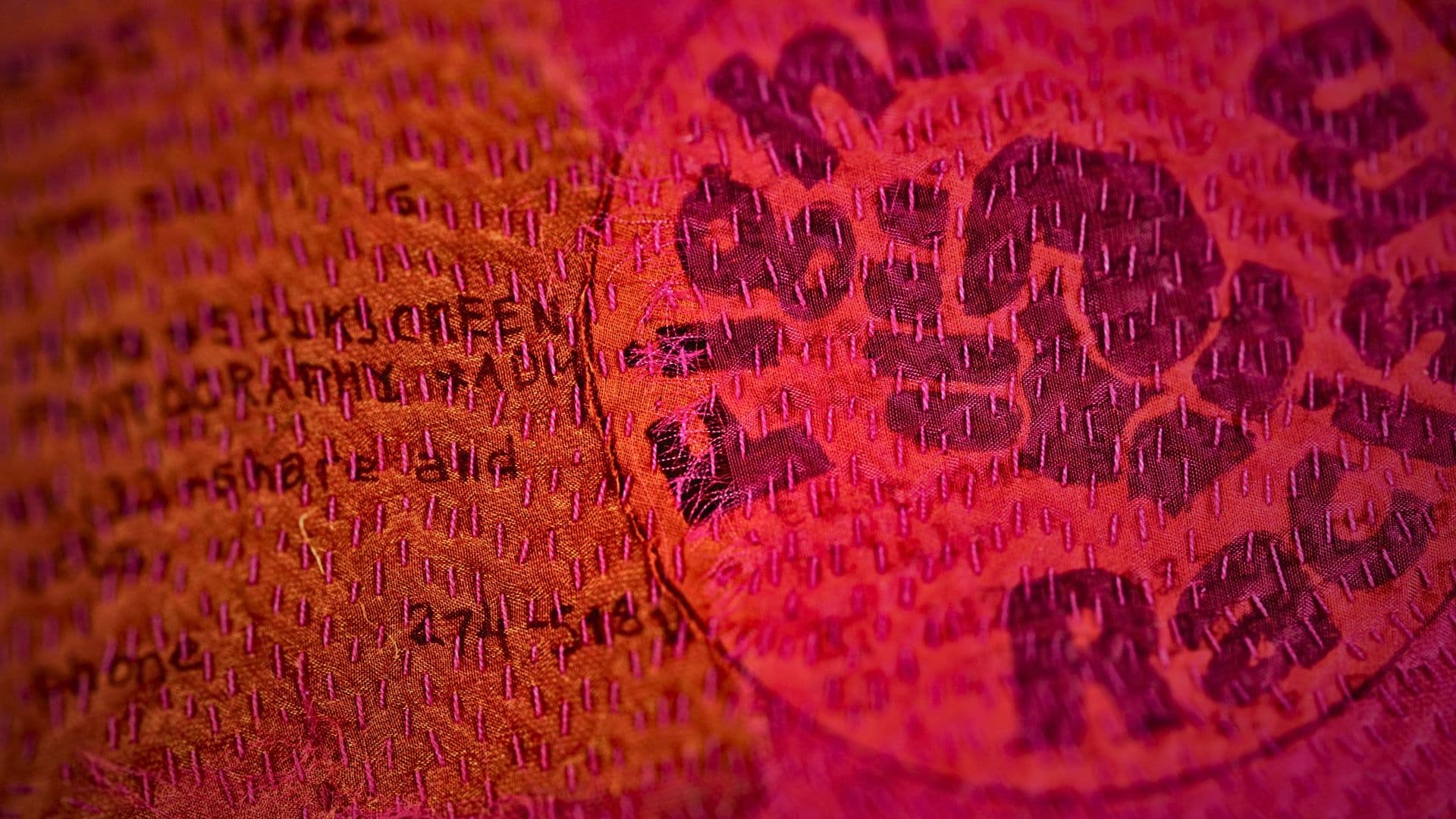
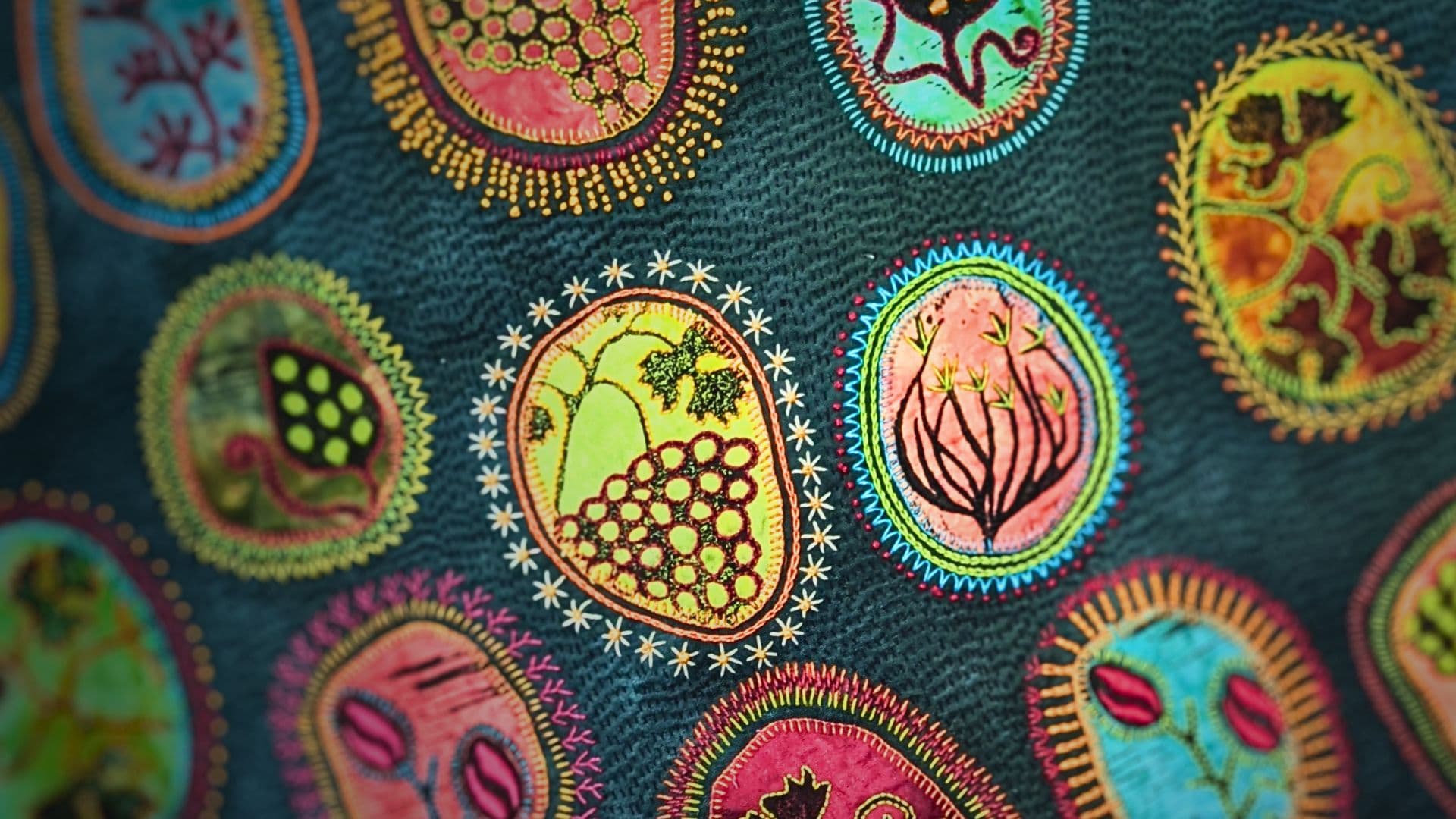
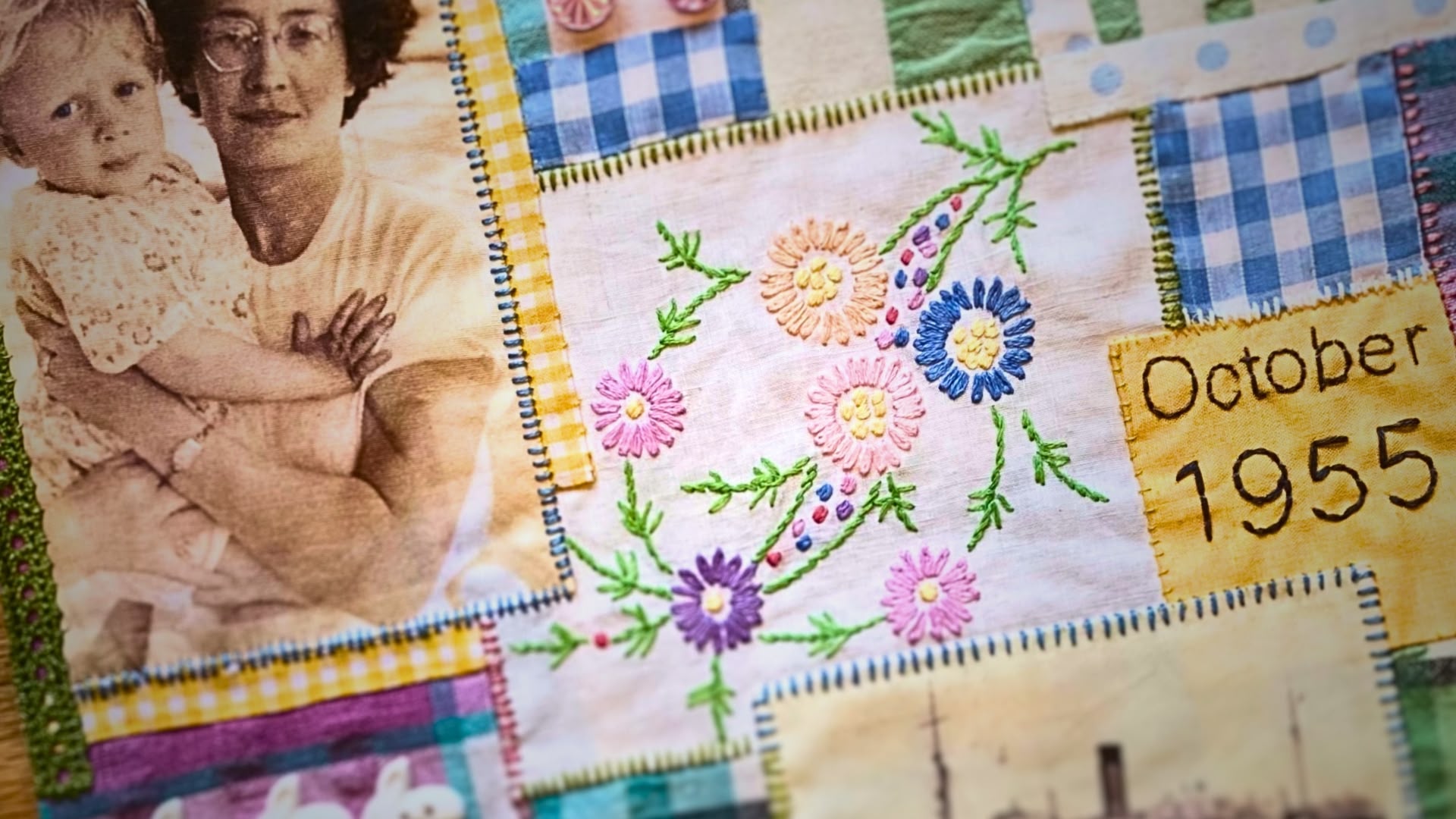
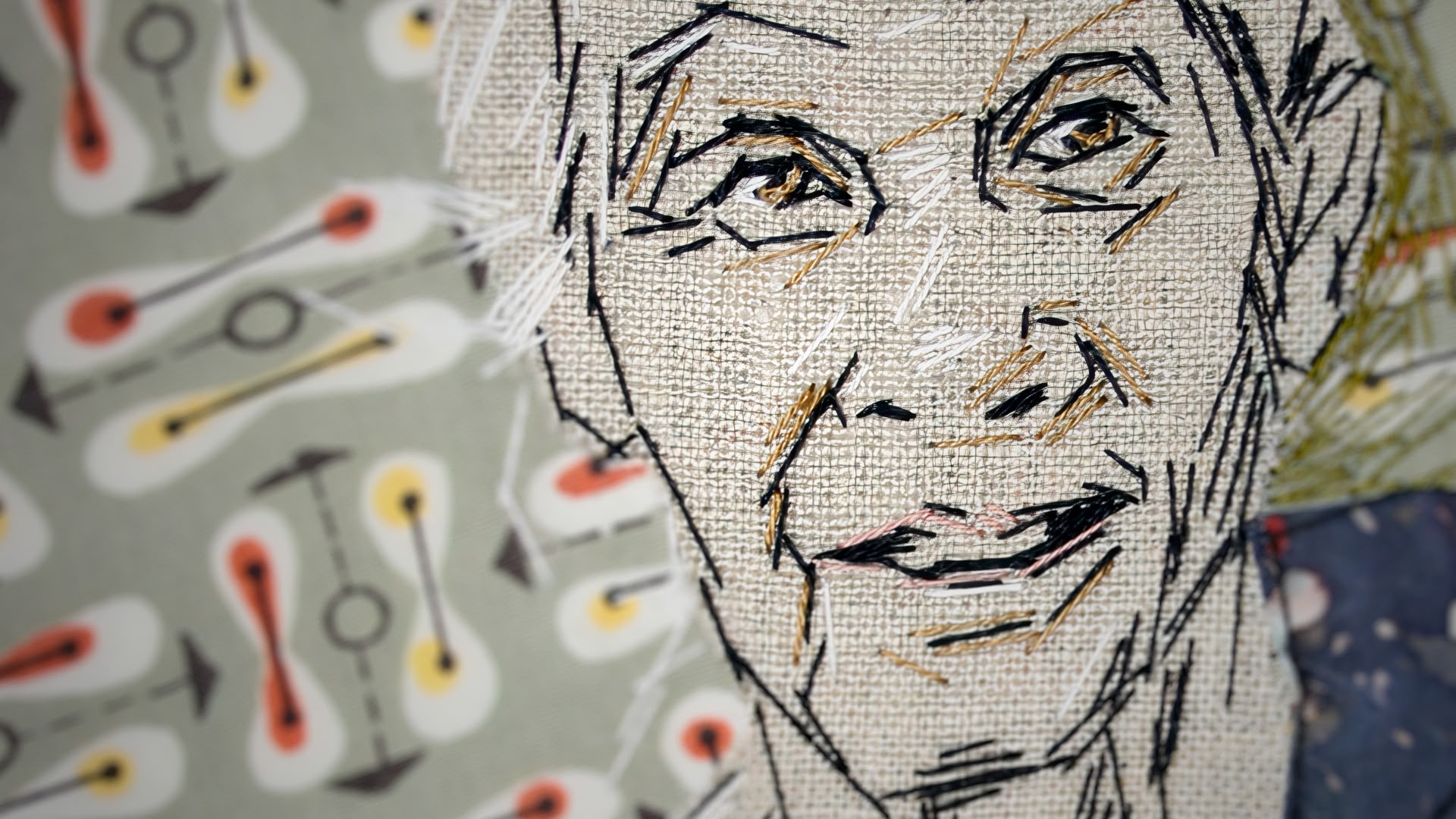
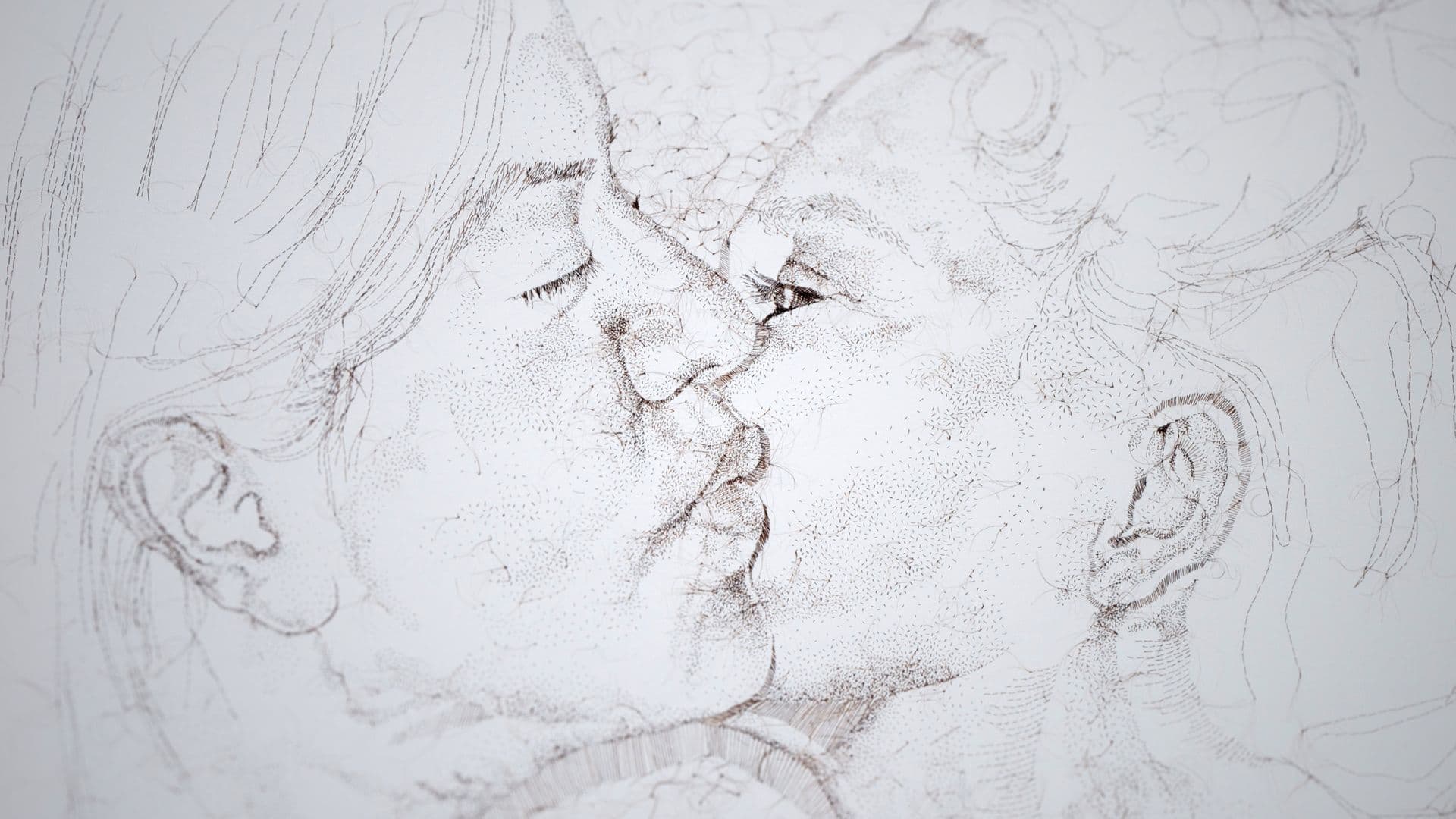
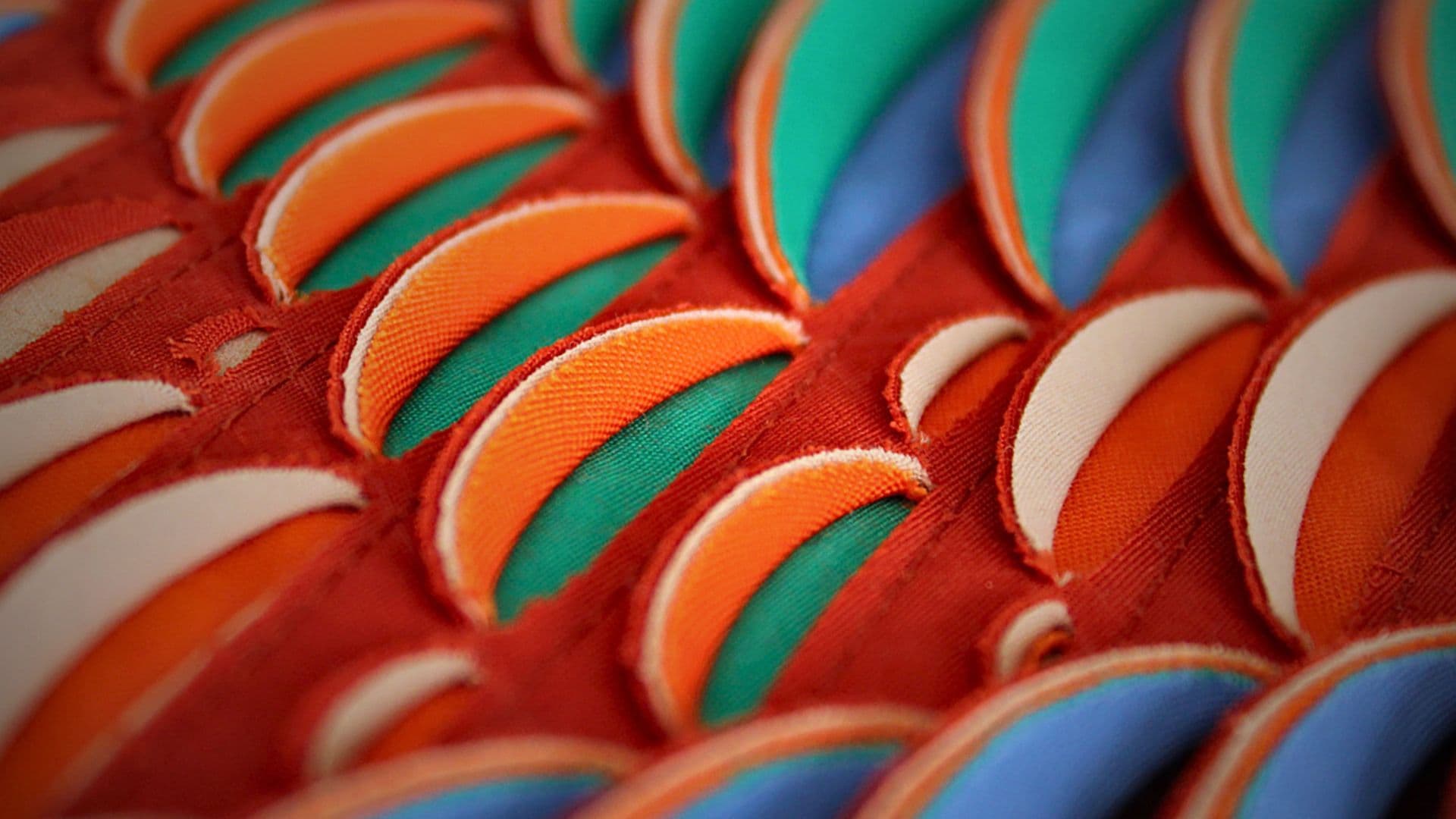

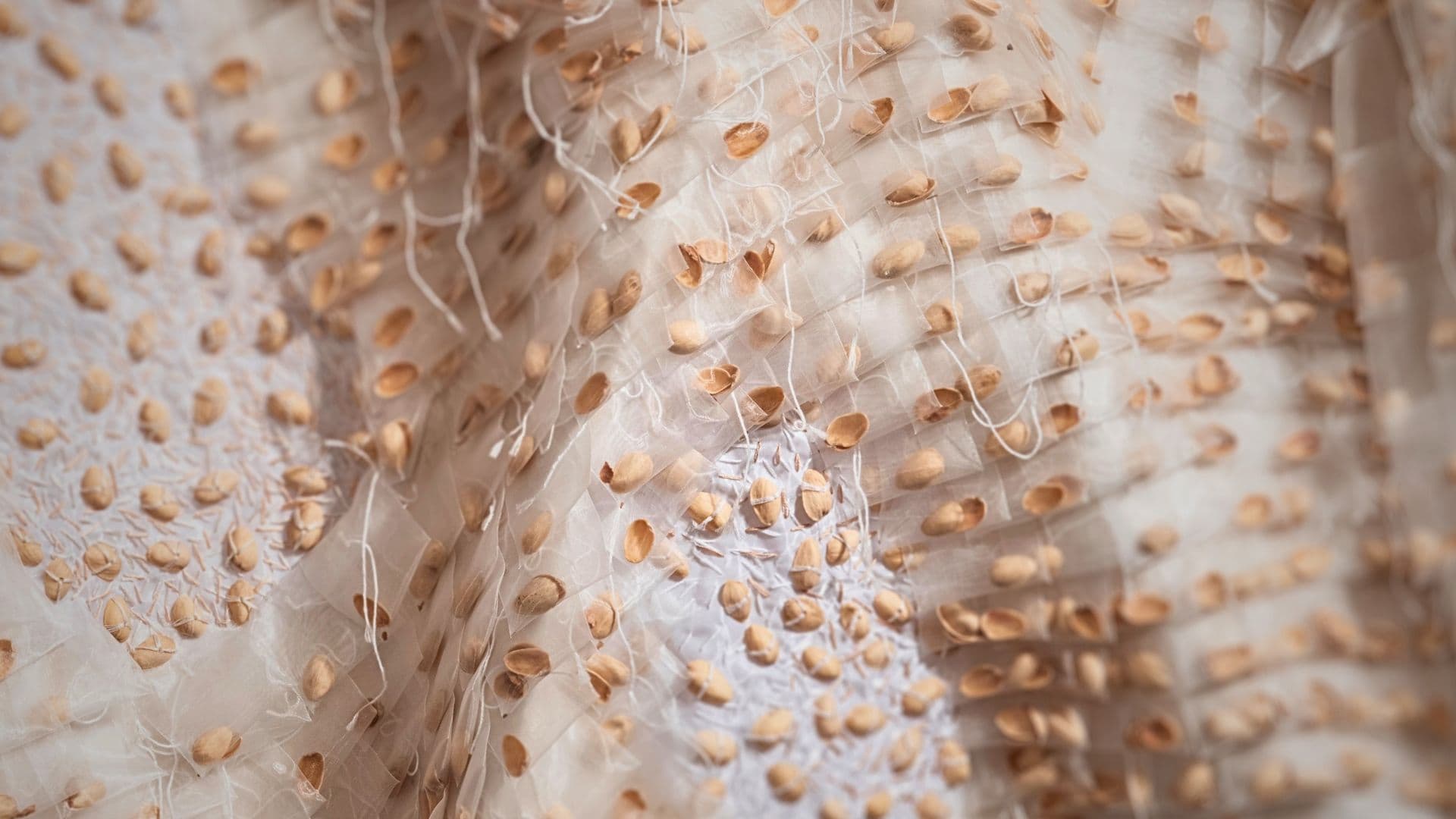
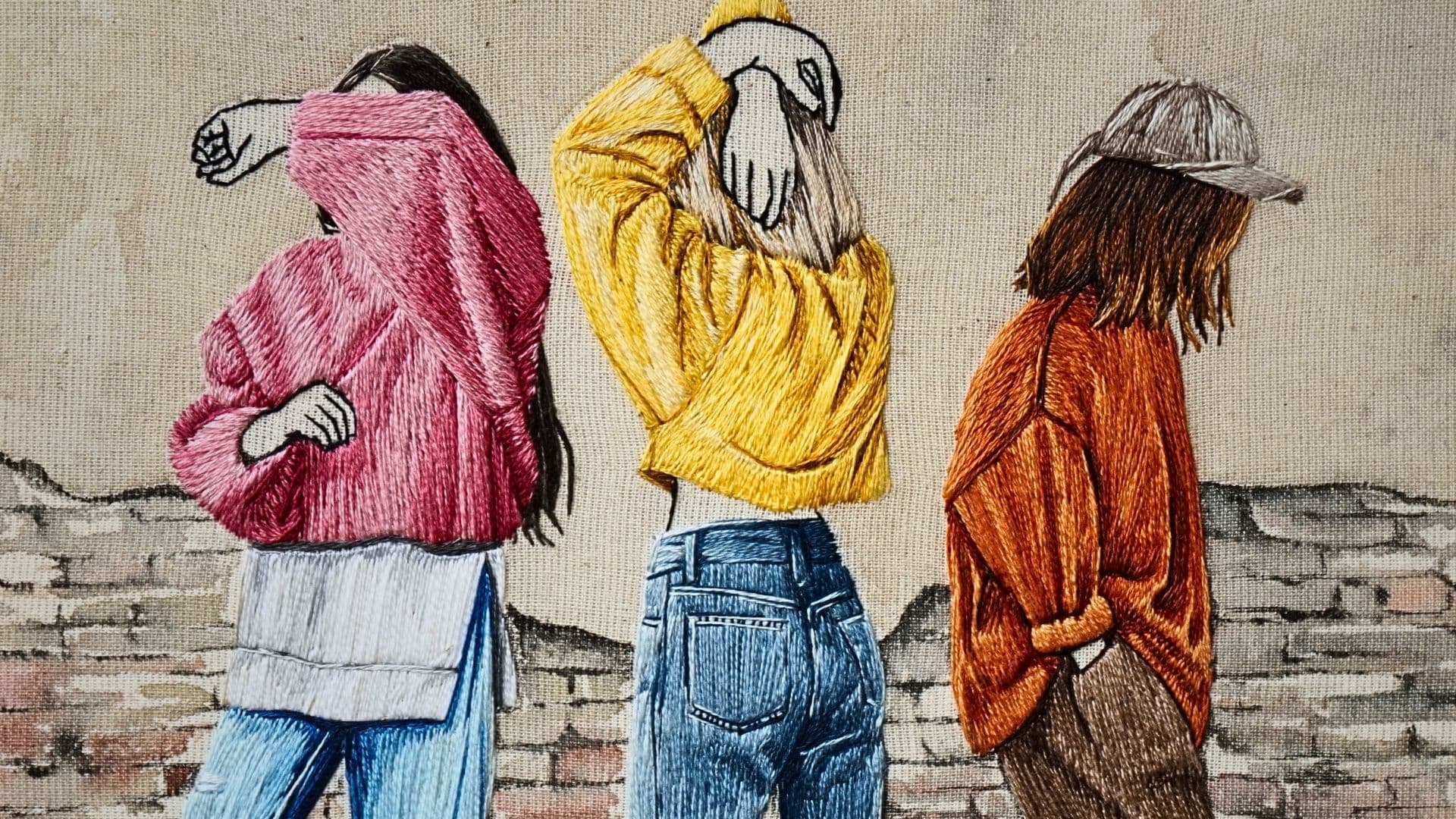
4 comments
Marie-Louise
Very kind of you to share your journeys, both through the pandemic and as a cancer patient, love this article and seeing the relationship between life events and the work – thank you!
Elizabeth Griffiths
Thank you Marie-Louise! Art is always a journey so I’m pleased to see you can see how it has changed with me
Carla Wilson
I remember watching that episode of Artist of the Year and thinking how amazing your work was and how much it captured the sitter and the day! It was inspiring. Very sad to hear he gave you such garbage input. I love your work, it’s so full of emotional weight I imagine it must be difficult to carry.
Elizabeth Griffiths
Thank you so much Clara, I got some nice feedback from the judges, it just didn’t make the final edit! Thank you for your support